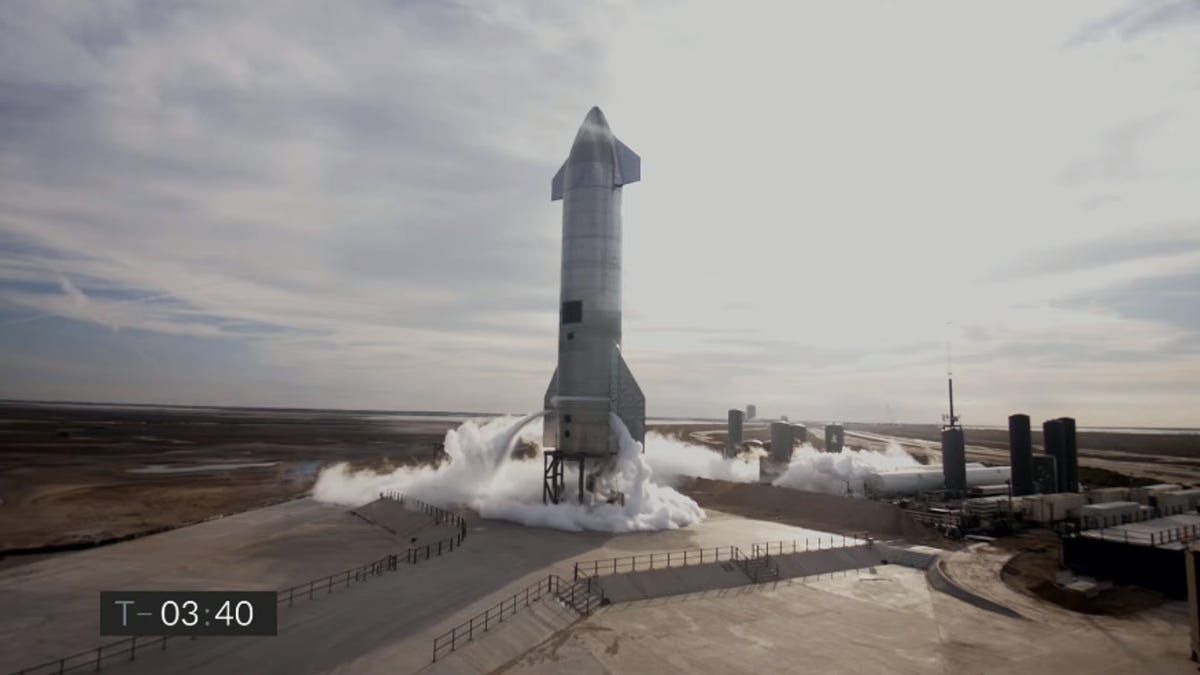Elon Musk reveals an early sign that SpaceX Starship SN10 was going to explode
The prototype did more than just break a leg during its debut performance. There were other warning signs of a big finish.

SN10's touchdown was more crunchy than soft.
A green flash as engines ignited for landing. A little too much speed. These were the early signs that SpaceX's SN10 rocket would join its predecessors in a rapid unscheduled disassembly, or RUD, as Elon Musk likes to call it.
On March 3, SpaceX finally appeared to make a soft landing of the latest prototype for its next-generation Starship rocket. But several minutes later, SN10, as the third prototype to make a high-altitude test flight was known, made an unplanned second flight after it exploded on the landing pad.
Elon Musk explained on Tuesday that the landing was actually a bit more crunchy than soft.
"Impact of 10 m/s (22 miles per hour) crushed legs & part of skirt," the SpaceX founder tweeted.
SN10 engine was low on thrust due (probably) to partial helium ingestion from fuel header tank. Impact of 10m/s crushed legs & part of skirt. Multiple fixes in work for SN11.
— Elon Musk (@elonmusk) March 9, 2021
A close look at the landing of SN10 reveals it came in a little hot and fast. It even appeared to bounce slightly upon touching down.
But there were also other hints of the rocket's fate. Photographer Jack Beyer noted an odd green flash as SN10's Raptor engines re-ignited to perform a flip maneuver just before landing.
Green flame in this context means engine is burning internal components made of copper. This is usually followed by a RUD (Rapid Unscheduled Disassembly).
— Elon Musk (@elonmusk) March 12, 2021
"Green flame in this context means engine is burning internal components made of copper," Musk explained on Twitter on Thursday. "This is usually followed by a RUD (Rapid Unscheduled Disassembly)."
On the live webcast of the mission, there's a long silent pause (almost a full minute) from SpaceX commentator John Insprucker after landing as SN10 sat on the pad, slightly leaning to one side and a little bit on fire, apparently uncertain if it would like to tip over and take a long permanent nap.
But SN10 didn't tip and Insprucker eventually declared a successful soft landing.
However, the consequence of the crushed landing legs and skirt -- and whatever caused the green flash seen before landing -- seems to have been the rocket exploding just like its two prototype predecessors did.
SN8 and SN9 both came in for very hard landings. SN10 almost nailed it, but Musk said that a fuel issue led to low thrust on the landing burn and that leg-crunching touchdown.
"Multiple fixes in work for SN11," Musk tweeted.
Oof. SN10 has decided to join SN8 and SN9.
— Chris B - NSF (@NASASpaceflight) March 3, 2021
Still a great advancement with the landing.
➡️https://t.co/bOsEo1u0u0 pic.twitter.com/RiXV6e3u04
Meanwhile, SN11 has already made an appearance on the pad at the SpaceX Starship development center in Boca Chica, Texas, where it will undergo testing prior to its own flight and landing attempt.
Here's hoping SN11 is the first of its brethren to survive the experience in one piece.
Follow CNET's 2021 Space Calendar to stay up to date with all the latest space news this year. You can even add it to your own Google Calendar.

